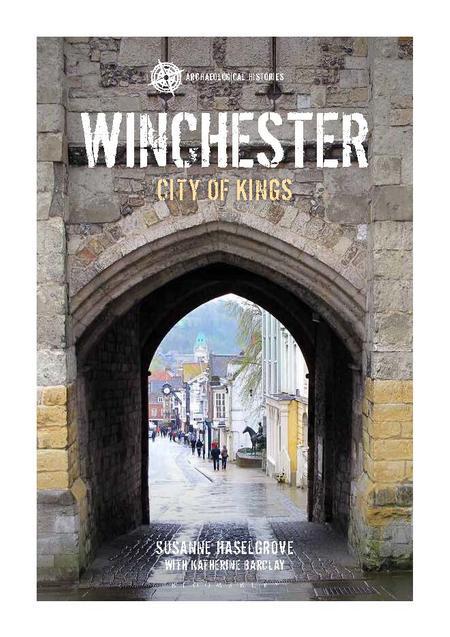An archaeological journey by Susanne Haselgrove
July 2024

In the late 1960s my family moved to Winchester, and I saw on our local TV news that Winchester Excavations’ site at Wolvesey Palace was looking for volunteers; I asked my mother who came with me the next day. The site supervisor was a bit dubious as I was a small 13 year old but agreed to give me a week’s trial which I evidently passed as they kept me on!
For the next five summers I was part of the 3000 volunteers who came from all over the world to work at Wolvesey as well as Cathedral Green, Winchester Castle and Brook Street. I met Giles Clarke at Wolvesey, and he asked me to part of the supervisory team on what I think is a unique project that brought together pupils from all Winchester’s secondary schools to excavate the late Roman cemetery site at Lankhills.
In addition to reading Archaeology at Cambridge I worked on the Roman city of Wroxeter in Shropshire, the Roman Villa at Woodchester, the Iron Age and Roman temple on Hayling Island, the prehistoric and early medieval site of Sutton Hoo as well the early medieval church and burial complex at Castelseprio, north of Milan, Italy. As well as university and extramural lecturing in archaeology, organising and publishing conferences I was involved in-promoting local archaeology through the Council for British Archaeology as well as leading summer schools and tours for visiting international students. I researched and published both on the transition from Roman Britain to early medieval England as well as the factors that affect the picture of the past we have in the present. I carried out a number of post-excavation analyses for the publication of the excavations at Wroxeter and worked as the Research Assistant for the Corpus of Anglo-Saxon Sculpture.
At Hayling Island I made what was perhaps my most exciting individual find when outside the excavation area I noticed in the plough soil what appeared to be a green (bronze) cylinder about ten centimetres long. When it was cleaned up it turned out to be what was interpreted as the top of a ceremonial staff with a bird’s head on one side and a man’s on the other. Double headed statues and other representations are common across the Celtic world in Britain and Europe. As an important ritual site Hayling Island received many donations of coins, jewellery and other precious metal items so this fitted in well with this pattern. A few years later I visited the British Museum to see an exhibition of significant archaeological finds made since the Second World War and was surprised and delighted to see this discovery there.
In 2001 I moved back to Winchester and in 2010 became the Secretary of the Winchester Excavations Committee (WEC) which is responsible for publishing the results of the 1961-1972 excavations in the city in the Winchester Studies Series https://www.winchesterstudies.org.uk/publications/. In addition to the publication of archaeological finds the series also includes documentary analyses as well as osteological and environmental surveys. In addition to helping with assisting with achieving the £600,000 fund-raising target in conjunction with Winchester College and the University of Winchester I organised a .major interdisciplinary conference on “Winchester: Archaeology and Memory”.
Having revived my involvement with Winchester’s archaeology I was delighted to be asked by WEC’s Associate Director, Katherine Barclay to work with her to respond an approach from Bloomsbury Academic Publishing to produce a volume on Winchester in the Archaeological Histories series. This was all the more interesting and challenging as it is the first one in the series to be on a “living city” so we embarked on completing the proposal and benefitted greatly from the comments received from the reviewers. There is no doubt that condensing the archaeological and documentary history of Winchester from Palaeolithic finds to the present has been a challenge. In addition to archaeological and documentary sources scientific analysis including DNA, isotope analysis have revealed much about Winchester’s past populations including the bishops and rulers in the Cathedral burial chests, the family of Alfred the Great and the lepers of St Mary Magdalene. Coming full circle, a number of the burials I excavated at Lankhills have been shown by isotope analysis to be those of people born in Pannonia who may have come to defend the late Roman communities of Venta Belgarum.
